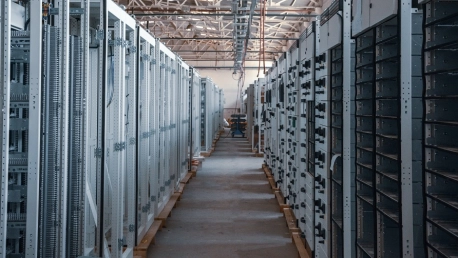As prices drop and SSD adoption grows, companies are beginning to show increasing interest in Non-Volatile Memory Express (NVMe) technology. However, the NVMe topic is surrounded by multiple misconceptions. Companies usually associate technological novelties with a restricted level of applicability, business risks as well as high acquisition costs—and NVMe is no exception. In the case of the new protocol, these assumptions are not valid. In this article, we discuss the most common myths about NVMe storage in the telecommunications industry.
Understanding NVMe Technology
Before talking about misconceptions and application areas, one must first understand what the new NVMe platform brings to the table. NVMe is a logical interface specifically designed to take full advantage of the low latency of SSDs and the parallelism of PCIe architecture. The NVMe controller transfers data stored on SSDs to the processor through 65,535 parallel command queues—each of which can contain over 65,000 commands per queue. This is an enormous leap from the “classic” Serial ATA (SATA) and Serial Attached SCSI (SAS) interfaces, which can only use a single queue that supports a maximum of 32 and 254 commands respectively.
By using parallel command queues, NVMe utilizes the multi-core architecture capabilities of new processor generations more efficiently. This allows each application or process to have its own independent command queue, thereby minimizing the impact on a system’s overall performance.
This explains why NVMe has become a common choice for companies that use relational databases such as OLTP, Oracle, and MS-SQL. The performance boost provided by NVMe flash storage systems allows companies to cut the number of physical servers, as well as the number of database licenses that need to be purchased.
NVMe-interface SSDs are also increasingly used by companies for virtualization projects that need storage environments capable of keeping up with the high I/O demands of virtual machines, as well as organizations working with DevOps environments that perform multiple iterations in a short time. Last but not least, NVMe flash storage solutions have become an essential component in projects such as Big Data, Machine Learning (ML), and Artificial Intelligence (AI).
NVMe Is a New and Expensive Technology
NVMe hasn’t been a “new technology” since almost a decade ago. The protocol began to take shape in the mid-2000s, while the Peripheral Component Interconnect Express (PCIe) architecture was being developed. In 2011, version 1.0 was released, followed by version 1.1 a year later. In 2013, the NVM Express Work Group was established, and in 2014 the specifications for version 1.2 were published.
After two more years, NVMe-over-Fabrics (NVMe-oF) features were defined and completed—which led to the release of NVMe version 1.3 last year. NVMe is a mature product that has moved beyond the pioneering phase and is part of the portfolios of major players in the storage equipment market, such as IBM, Dell-EMC, HPE, and Fujitsu. Market analysts predict that NVMe will soon replace SCSI as the protocol of choice in enterprise-class arrays.
In the last 2-3 years, small and mid-sized companies have been turning to NVMe interfaces to get a performance boost and a guaranteed return on investment—specifically due to prices becoming more competitive. Currently, the price of NVMe’s flash solutions is approaching that of SSDs that use traditional interfaces.
NVMe Has a Disruptive Effect on Business Processes
This was probably a true statement at the time of the NVMe 1.0 release when the scarcity of the new technology was an inhibiting factor. In recent years, however, several “NVMe-ready” flash storage solutions have become available on the market—allowing companies to extend their storage architectures without disrupting business processes or investment budgets.
State-of-the-art solutions offer multiple integration possibilities with existing storage environments and can operate as a software defined system by leveraging existing enterprise storage solutions.
NVMe Storage Is for Data Centers
Another misconception about this technology is that only dedicated data centers and cloud providers can make use of it. NVMe storage is already being used in various business scenarios where real-time customer interactions count—such as finance, e-commerce, and software sales. Other use cases include AI, ML, Big Data, Advanced Analytics, and DevOps.
According to a market forecast, the global non-volatile memory express (NVMe) market size is projected to reach USD 163.5 billion by 2025, with growth at a CAGR of 29.7% from 2020 to 2025. The forecast also highlights that the Banking, Financial Services and Insurance (BFSI), Consumer Goods & Retail, Telecommunications & IT, Healthcare, Energy, Government, Education & Research, Media & Entertainment, Manufacturing, as well as Business & Consulting industries will be implementing and using this technology more.
Conclusion
As businesses invest in the ongoing digital transformation, storage protocols are improving. SATA has been the dominant protocol so far, but the gears are shifting towards a new kind of technology: NVMe.









